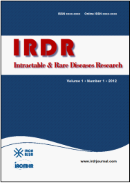Drug Discov Ther. 2009;3(3):114-122.
Correlation of in vitro dissolution rate and apparent solubility in buffered media using a miniaturized rotating disk equipment: Part II. Comparing different buffer media.
Persson AM, Pettersson C, Sokolowski A
A correlation of the logarithmic values of the in vitro dissolution rate, G, and apparent solubility, S, was made for seven different drug substances from all of the classes in the Biopharmaceutics Classification System (BCS), in four different phosphate buffers. The effect of inorganic salts added as sodium chloride, sodium nitrate, sodium phosphate and sodium sulfate in the buffer media was investigated for the correlation. Triethanolammonium acetate buffer was also included in the study of the correlation of logG vs. logS. The pH was 7.0 ± 0.1 in all of the buffers to mimic a pH condition in intestinal fluids. The dissolution rate was determined with a newly constructed miniaturized rotating disk equipment, which enables fast determinations and consumes only minute quantities of substance (about 5 mg). The solubility was determined by conventional shake-flask methodology, using 1.5 mL solution volumes. All quantifications were performed with reversed phase high-performance liquid chromatography (RP-HPLC) and diode array detection (DAD). The different inorganic anions seemed to affect the solubility more than the dissolution rate. The phosphate and nitrate ions decreased the solubility for amines compared to the chloride ion. The best correlations of logG and logS were however obtained with a triethanolammonium acetate buffer. The good correlation (R2 = 0.991) may be sufficient in initial screening of drug solubility, based on dissolution rates in aqueous buffer media.







